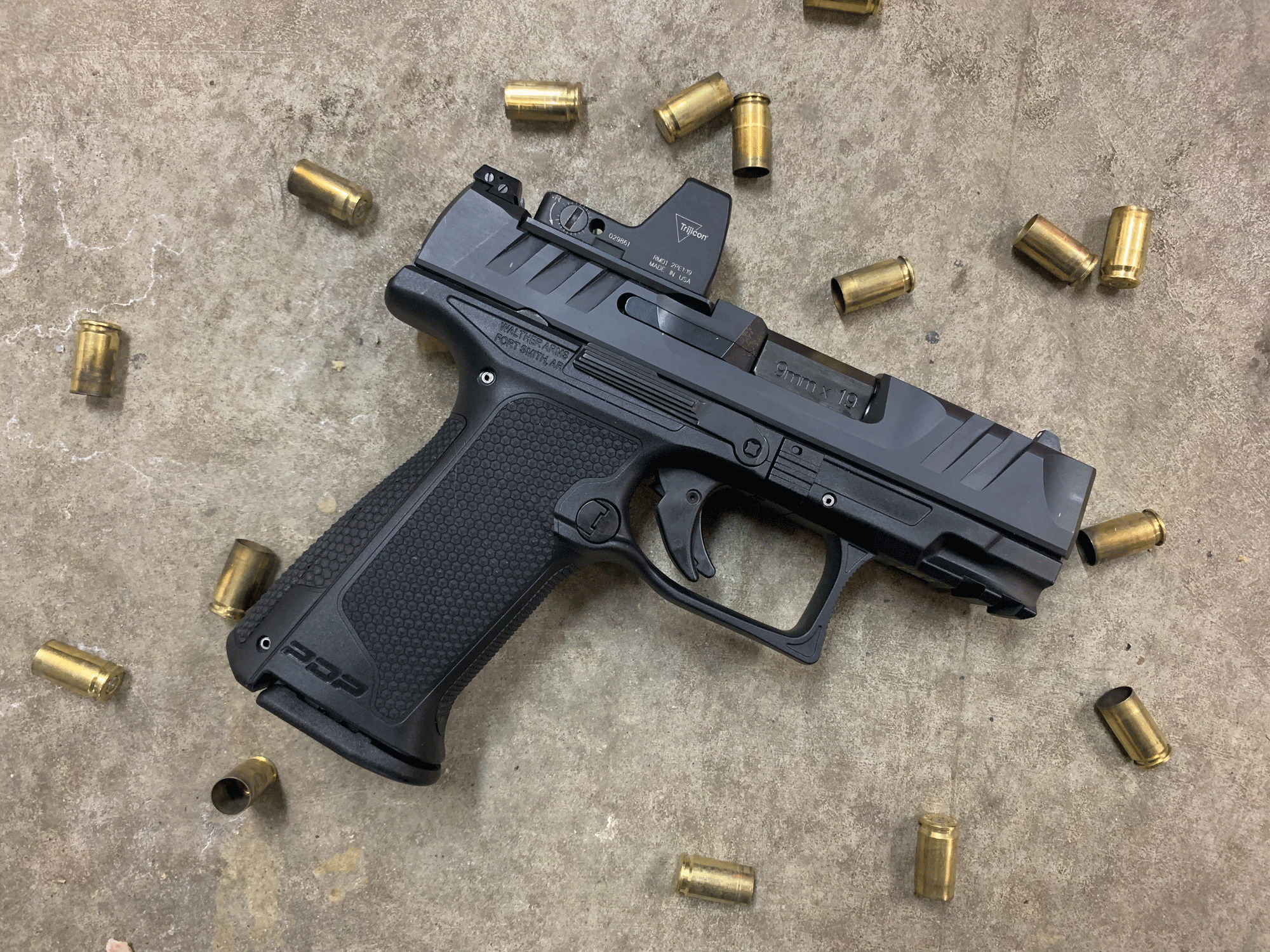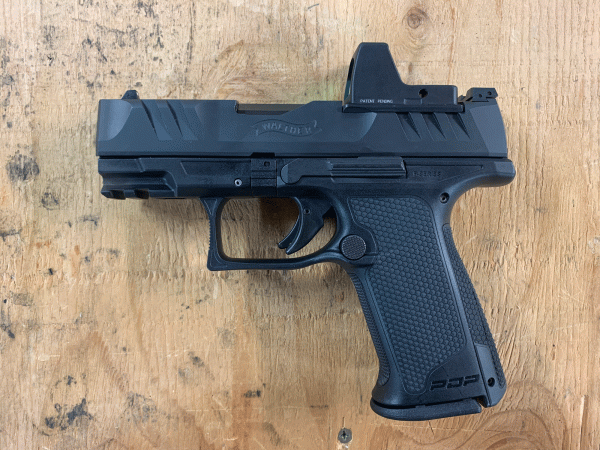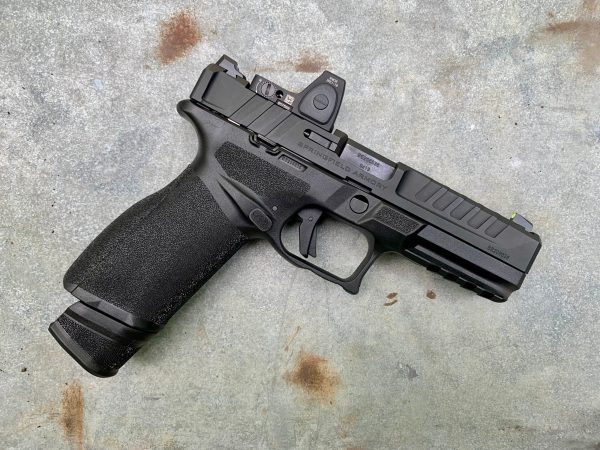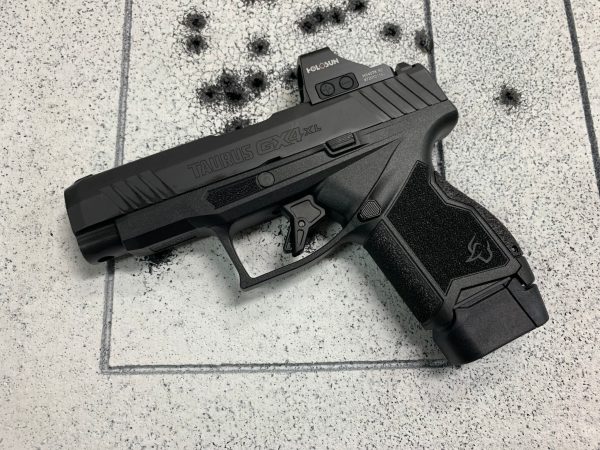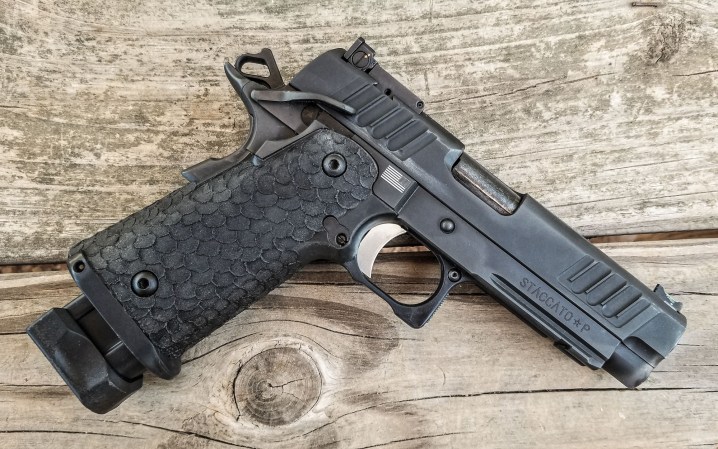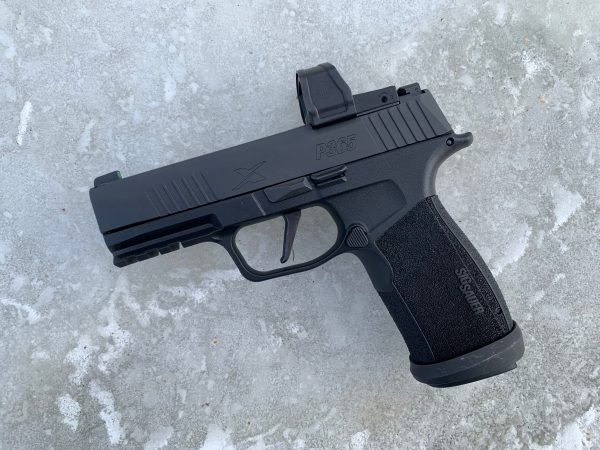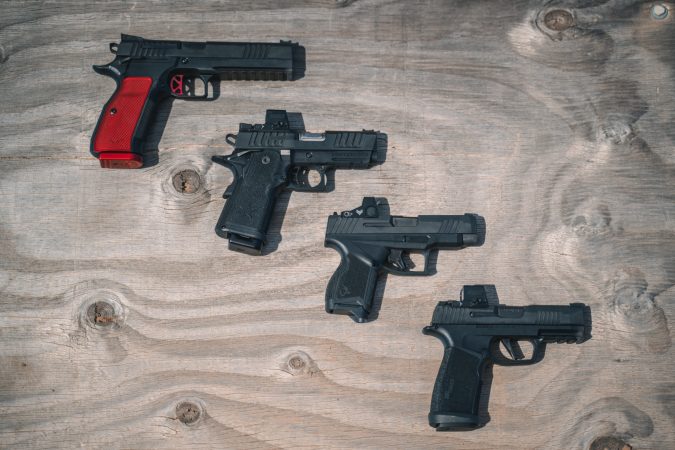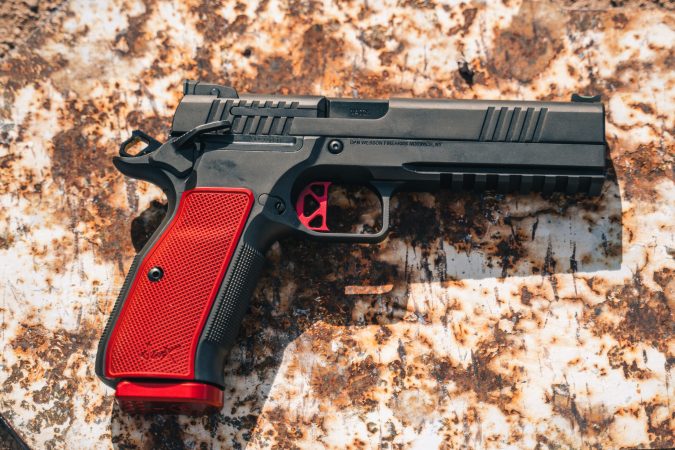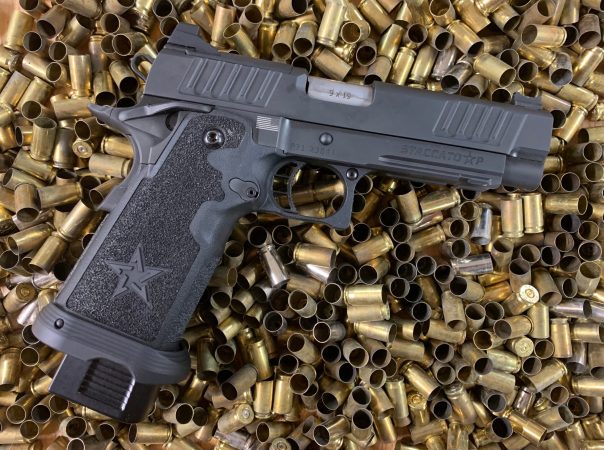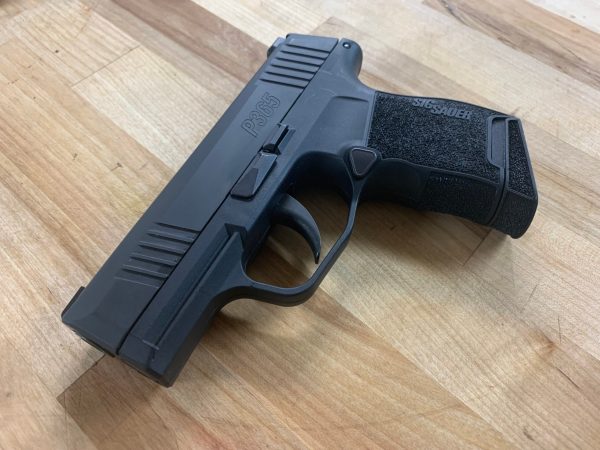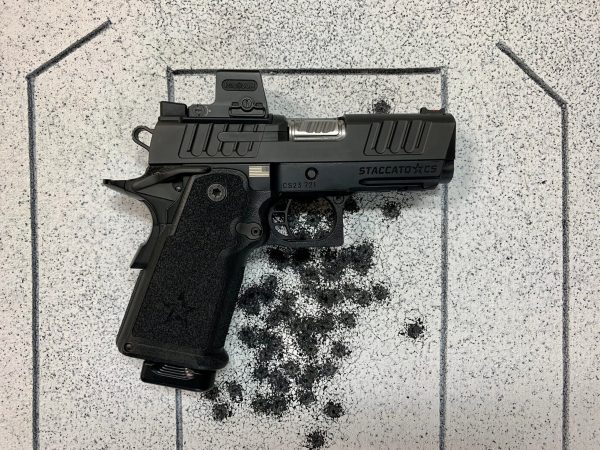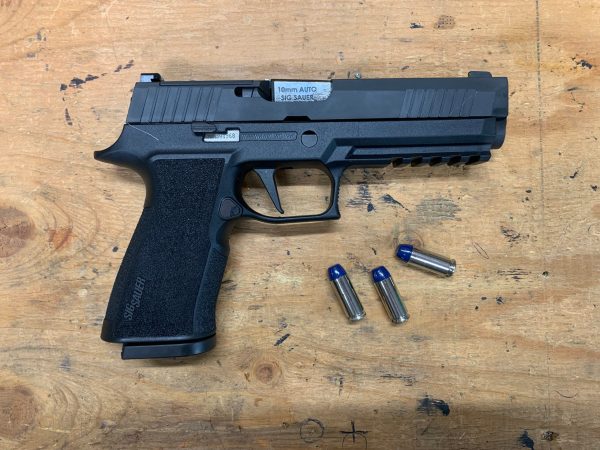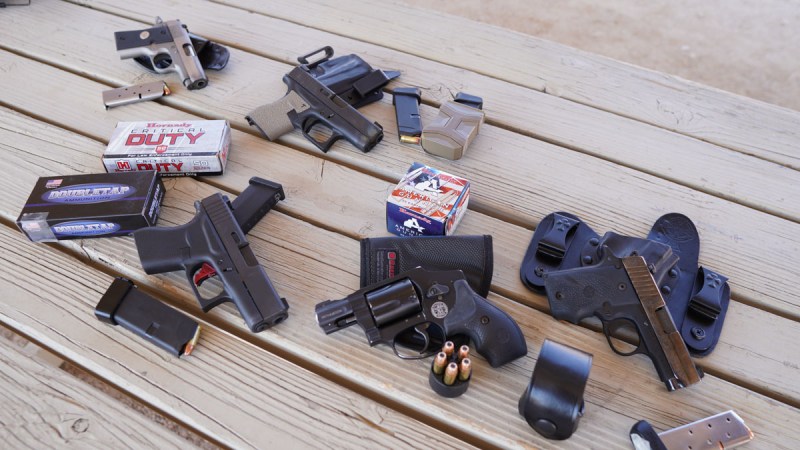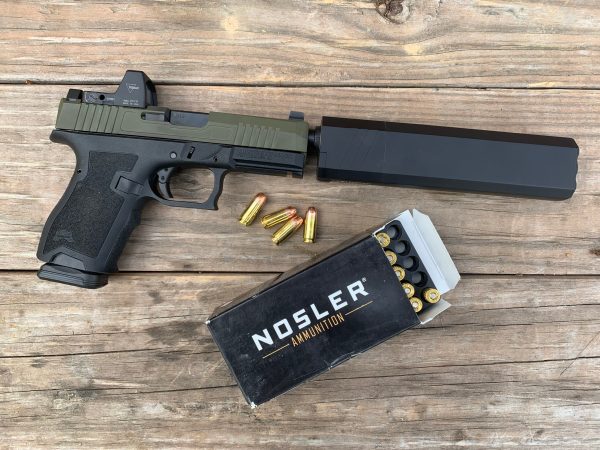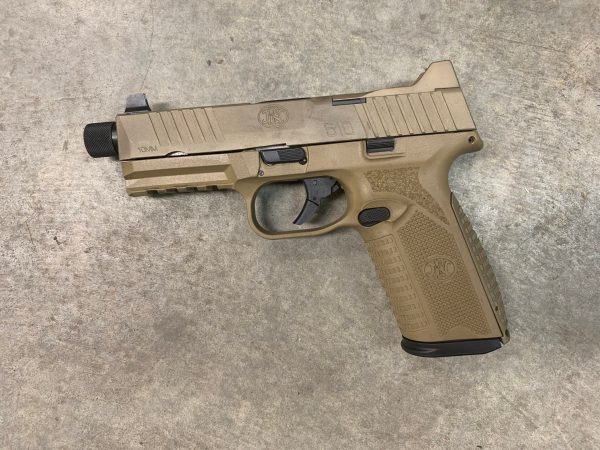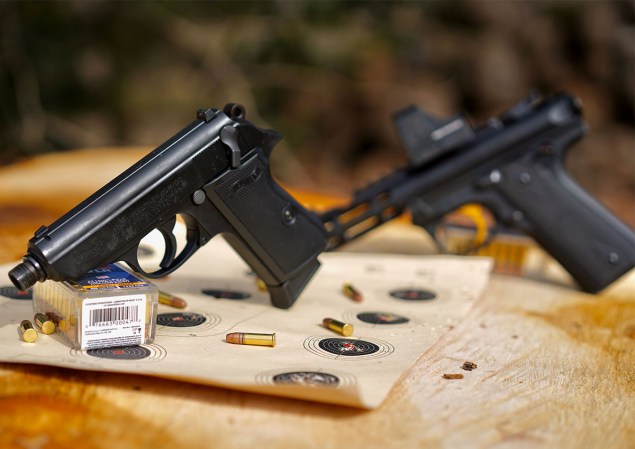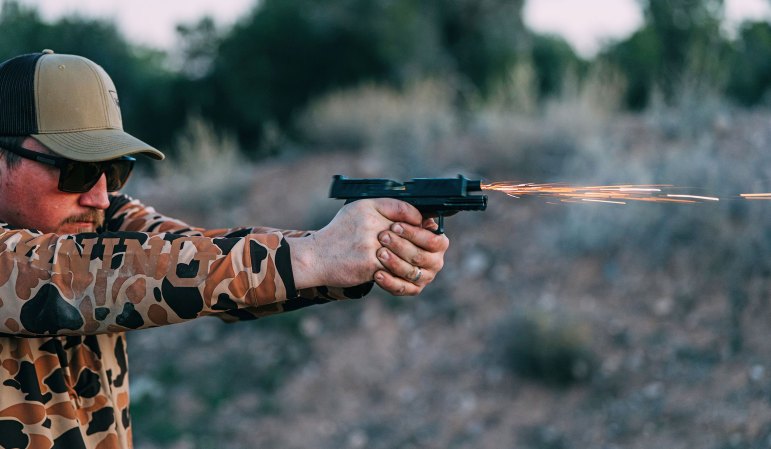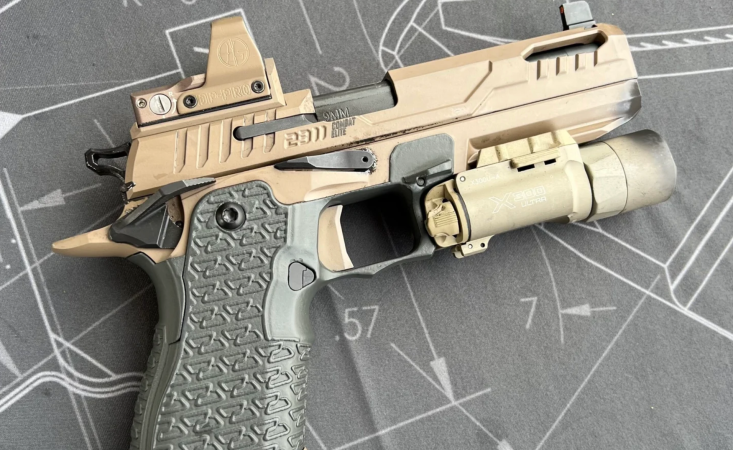We may earn revenue from the products available on this page and participate in affiliate programs. Learn More ›
The Walther PDP F is a compact concealed-carry pistol that has a slimmed-down frame, a shorter trigger reach, and it might just become your new favorite EDC. Walther has been in the concealed-carry gun market for about as long as any modern gunmaker, with their .380 ACP PPK being immortalized by James Bond on the silver screen. Despite the ever-expanding universe of EDC handguns, Walther has done a fine job keeping up. Their evolving lineage of polymer pistols that started with the P99, PPQ, PDP, and now the PDP F, runs neck-and-neck with some of the best striker-fired production pistols on the market. After putting more than 500 rounds through one, I had a hard time finding anything that the Walther PDP F didn’t do well.
Walther PDP F 3.5-Inch Specs
- Caliber: 9mm
- Capacity: 15+1
- Magazine Material: Steel
- Dimensions: 5.33 inches (H) x 6.75 inches (L) x 1.37 inches (W)
- Weight: 23 ounces (weighed with empty magazine, no optic)
- Frame: Polymer
- Slide: Steel, black finish
- Barrel: 3.5-inch, black finish
- Sights: Polymer 3-dot, white, adjustable rear
- Optic ready: Yes, uses Walther adapter plates
- Trigger: Single-action, curved shoe, 5 pounds 5 ounces (measured)
- Safety: Trigger safety bar
- Price: $600
Walther PDP F Review Highlights
- Excellent ergonomics
- Optic-ready, uses adapter plates
- Good trigger and accuracy
- Controls are ambidextrous and easy to operate
- Average Group Size: 1.59 inches (5-shot groups at 15 yards)
The Walther PDP F and Its Distinct Heritage
The Walther PDP F is the most compact model in the PDP Line, which has its roots in the P99. Unlike the PPK pocket pistol, the P99 was a full-sized striker-fired, polymer-framed pistol that was much better-suited for duty use. The P99 was followed by the PPQ, which employed many of the same ergonomic qualities as the P99. It had a similar grip shape, the same style of takedown lever, and similar magazine release lever. The PDP, or performance duty pistol, has since replaced the P99 and PPQ, but maintains their favorable shape and feel.
In a homogeneous sea of polymer-framed, striker-fired pistols, the PDP distinguishes itself with superb ergonomics and easy-to-use controls. Though it stays true to the basic shape and lines of the PPQ and P99 pistols, the PDP has evolved to meet the expectations of the modern shooter. The grip profile is streamlined, with a raised honeycomb-shaped texture and a backstrap that nestles snugly into the web of the hand. The undercut-style trigger guard allows a firm and repeatable grip. The grip shape and angle are intended to make using a red dot sight easier and faster.
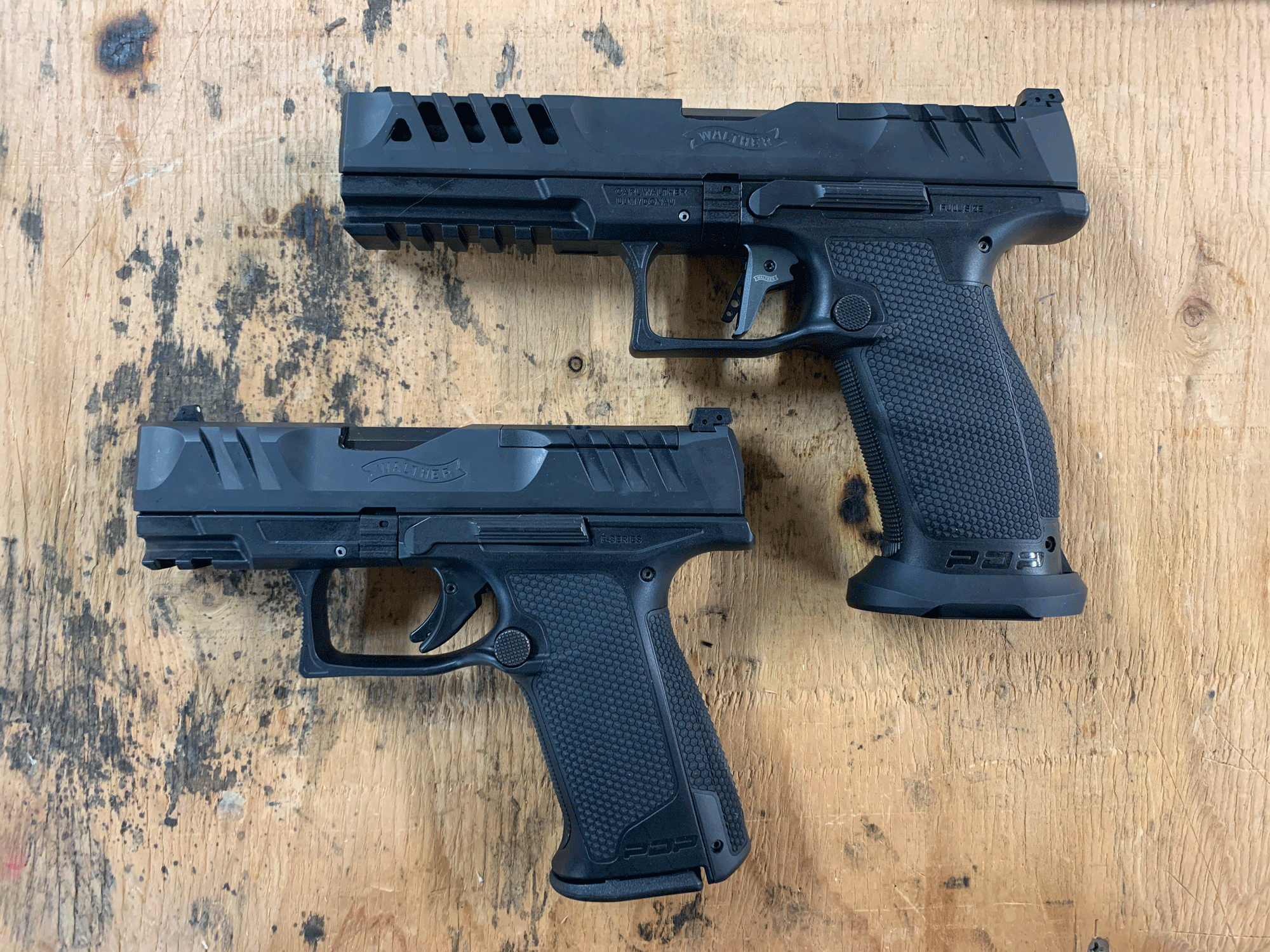
Tyler Freel
Like the PPQ, the PDP features ambidextrous slide stop levers that measure 1.79 inches from the end to their pivot point. Where most polymer-framed pistols employ a small sheet metal tab, this long, well-textured lever on the PDP is very easy for the shooter to operate and doesn’t require precise thumb placement. This lever-type design operates smoothly and provides some mechanical advantage. It requires less force to operate than tab-design slide stops, but the part that engages the slide is only slightly forward of the rear of the lever—so some of that perceived leverage is an illusion. However, simply having a longer, well-textured slide-stop surface makes it easier to engage and disengage, regardless of hand size.
Where P99 and PPQ models had lever-type magazine releases at the bottom of the trigger guard, the PDP and PDP F use a large knurled button that’s reversible for left-handed shooters. Magazines release with ease and drop freely, but the button is protected from being accidentally pushed by a molded portion of the frame.
Walther PDP F: A Slimmed-Down Version
For all its ergonomically sound qualities, the full-sized PDP grip is a bit beefy. The grip angle isn’t as dramatic as a Glock, but it features a notable curve or hump on the backstrap. The concept behind the Walther PDP F is to slim down the grip and shorten the distance to the trigger. This makes it a more ideal platform for women or shooters with small hands—though I think few shooters would find it dainty or awkwardly slim.
The grips of the full-size PDP and PDP F are the same width behind the trigger, but I measured the trigger reach to be more than a quarter-inch shorter on the PDP F. The middle portion of the grip is slimmed down about a tenth of an inch, and the rounded-hump backstrap is exchanged for one with a more subtle curve. It’s most comparable to the grip size of pistols like the Sig P365 XMacro or Springfield Hellcat Pro—though not as blocky as the latter. The grip is notably thinner and more refined than those of the similarly-sized Glock G19 and Sig P320 Compact.
I have fairly large hands and, despite the svelte grip on the PDP F, found it pleasant to shoot and easy to control. While blazing through Bill Drills, I could keep the dot from my RMR in the small sight window, and on target—a difficult task with many compact 9mm pistols. I could also maintain a quick, accurate pace on an IPSC target at 25 yards. The pistol has a full-sized trigger guard, so those with longer fingers need not worry about having to curl those booger-pickers back into a tiny trigger guard. If you’re accustomed to shooting micro-compact pistols, you’ll be pleased with the PDP F’s feel.
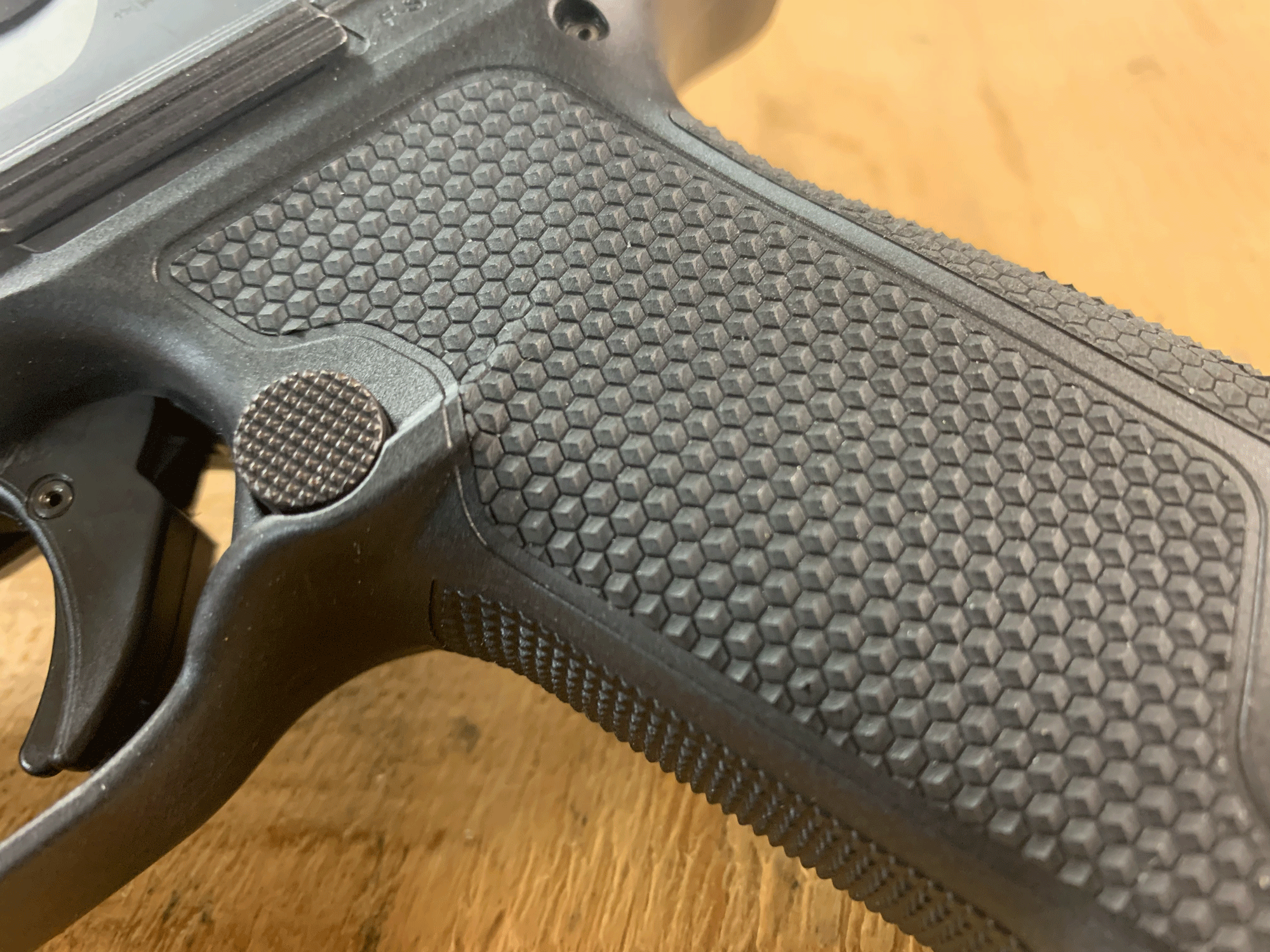
Tyler Freel
Walther PDP-F Carry Features
If you know polymer pistols, lots of the PDP F’s features will seem familiar. The recoil spring and guide rod, slide rails, striker, extractor, and trigger-bar safety are all pretty typical for this type of pistol. However, it’s a smartly-designed carry gun with effective, practical features that compliment its other attributes. The overall footprint is about the same as the Glock G19, and the dust cover features a two-slot accessory rail for mounting a small light or laser. Though nit-picky, I’m not a big fan of the roll pins in the frame—particularly the one that can be drifted out to change the grip backstraps. Roll pins can take a beating when they’re removed and replaced. I’d prefer solid pins.
The slide has deep, forward-leaning cocking serrations that are easy to grasp, but won’t drag on holsters or clothing when drawing. The fore and aft corners of the frame are scalloped away, as is the area around the ejection port. I love the balance of aggressiveness and gentle contour in the slide. It has bite where you need it, while looking like it was carved by a detail-obsessed German craftsman—who judiciously pared away any obtrusive corners or edges.
The Walther PDP F 3.5-inch is the shortest-barreled version of the PDP, and comes with a set of white three-dot polymer sights. The rear sight is adjustable for windage and elevation, and is protected by a sight housing that has the same footprint and height as most non-adjustable sights. It ships with a cover plate installed, but is optic-ready, and uses Walther’s proprietary mounting plates to fit a variety of optics. Red dot pistol sights are undeniably faster and more effective than irons, and this pistol is intended to be carried with one. With a Trijicon RMR mounted, I noted that the iron sights are not co-witnessable.
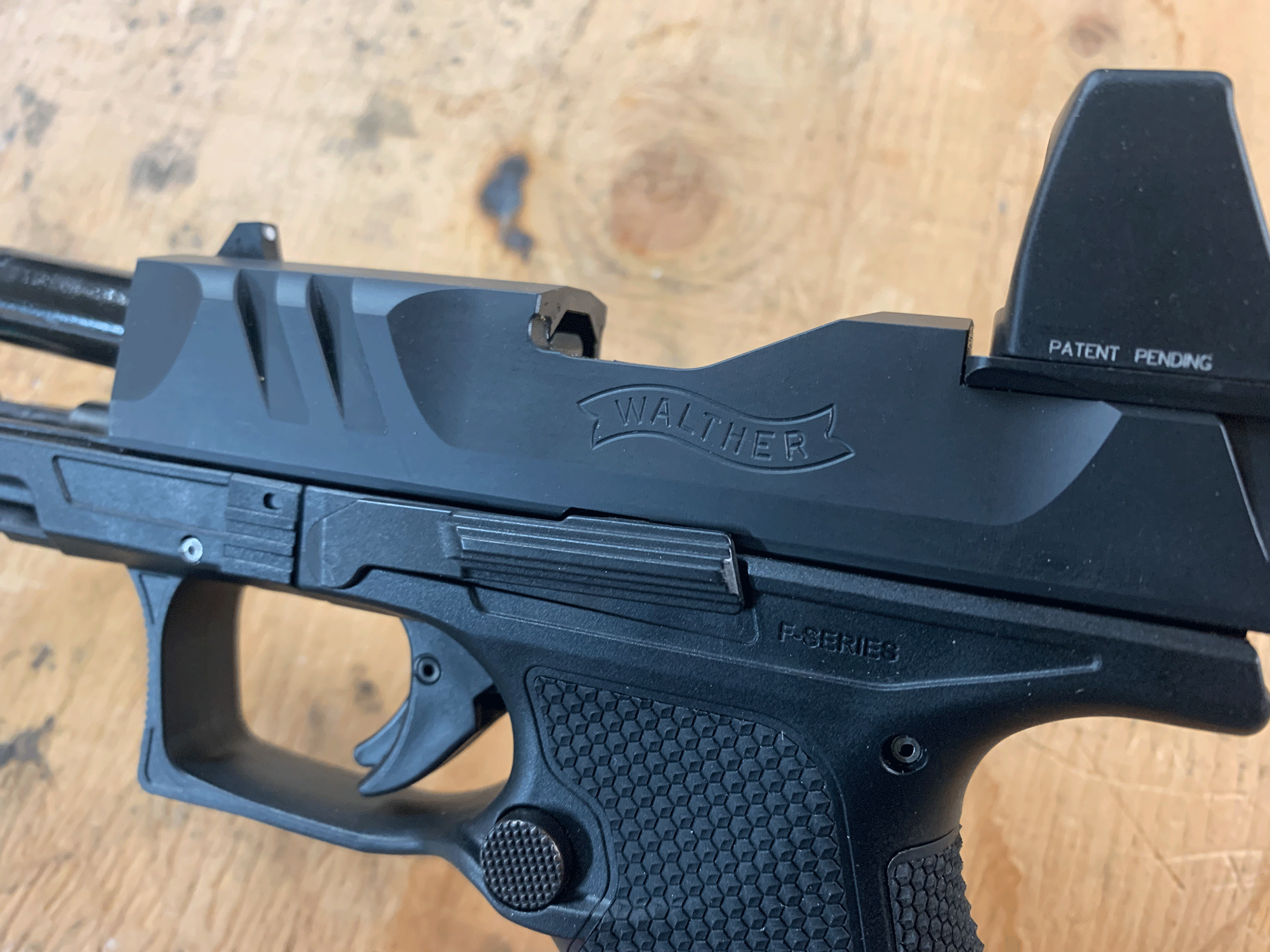
Tyler Freel
Shooting the Walther PDP F 3.5-Inch
When testing a handgun, there’s no substitute for rounds expended when it comes to really ironing out the good, bad, and sometimes ugly of how a gun performs. Though 500 rounds isn’t a torture test, I can usually take the measure of a particular gun within that round count. I didn’t clean the pistol, but did add a few drops of oil to the barrel and slide rails. I had no complaints about the PDP F when it came to function. It worked well with every type of ammunition I threw at it, from 100-grain machined copper bullets to 135-grain +P loads, to 147-grain match ammo. Periodically, the slide would not lock back on an empty magazine, but that’s neither a unique nor deal-breaking issue.
I ran this pistol through many repetitions of standardized drills, but more importantly, I alternated with several other pistols in its class. Testing a pistol in a vacuum doesn’t tell you much about how it compares to its peer group. I brought out some of my favorites like the Sig P320 XCompact, Glock G19, and Springfield Hellcat Pro, and the PDP F isn’t decisively topped by any of them. The trigger pull and reset are better than those of most production striker-fired pistols, as are the controls and ergonomics. It’s also significantly more accurate.
For accuracy, I followed our standard protocol of shooting 5-shot groups from a standing, tripod-supported position. I tested the PDP F with 4 types of ammo: 100-, 115-, and 135-grain defensive ammo, and 147-grain Federal Gold Medal Action Pistol ammo. Average group size overall was 1.59 inches, with the 147-grain ammo being most accurate, averaging 1.33-inch groups. That’s pretty stellar for a compact, striker-fired pistol. Most of the compact pistols we test average closer to 2.5-inch groups at 15 yards.
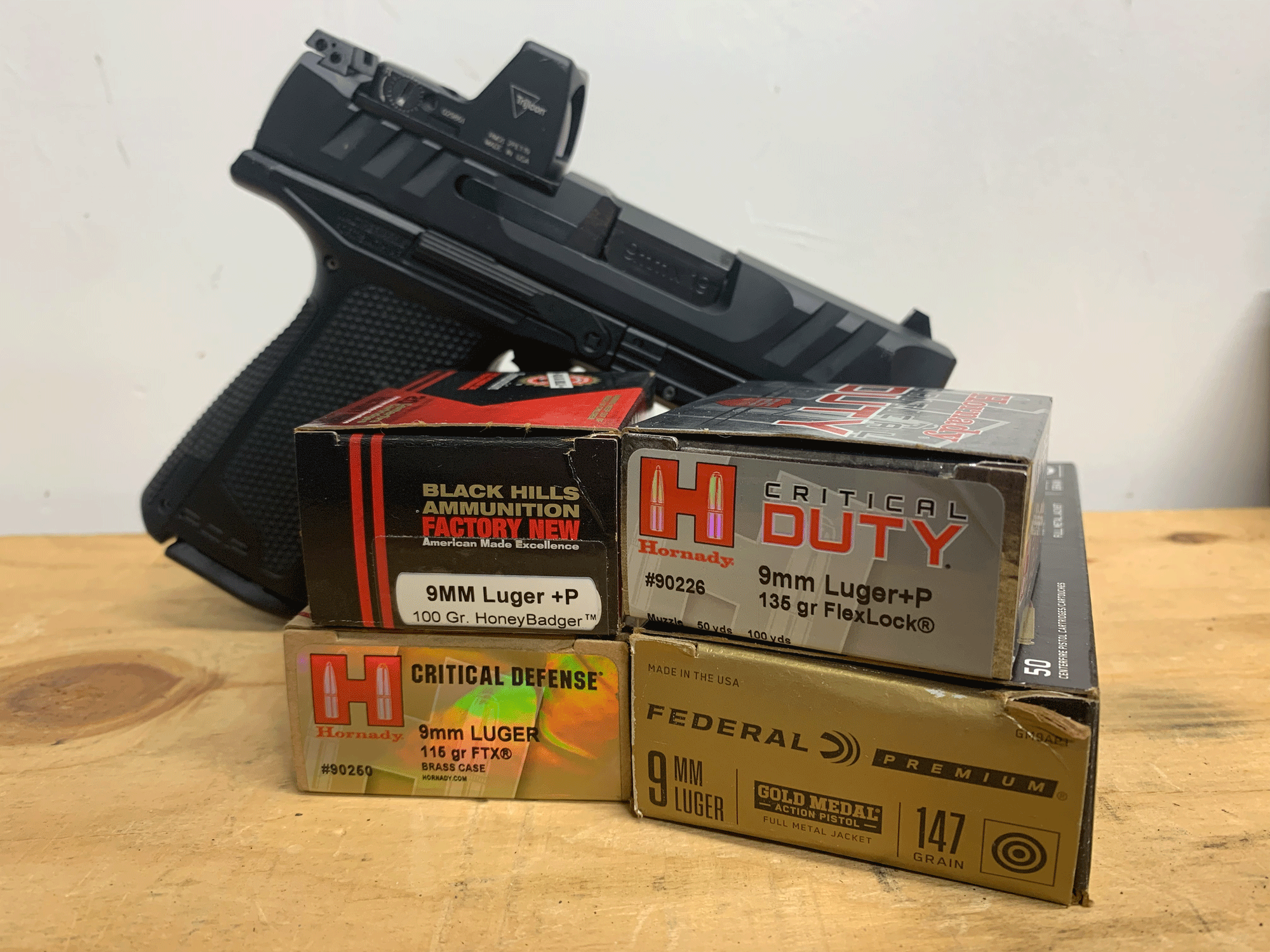
Tyler Freel
What the Walther PDP F Does Well
The Walther PDP F 3.5-inch has excellent ergonomics, and its slender grip and shorter trigger reach are excellent for a wide variety of shooters. It has a good trigger, great controls, and is easy to shoot accurately.
Read Next: How to Hold a Pistol
Where the Walther PDP F Could Be Better
There isn’t much I don’t like about the PDP F. I think it could benefit from a more universal optic mounting system, co-witnessable iron sights, and I’d like to see the roll pins in the frame replaced with solid pins.
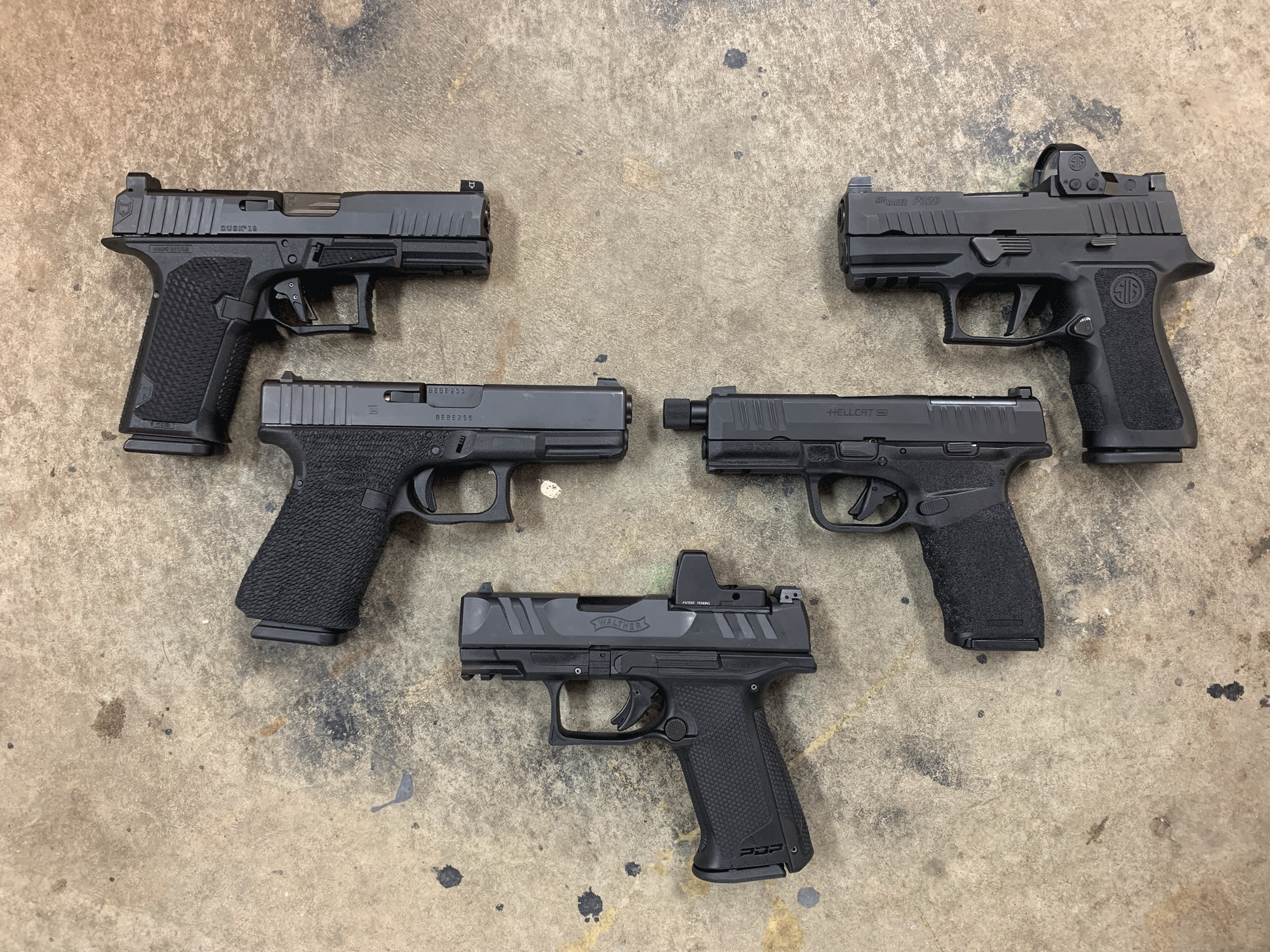
Tyler Freel
Final Thoughts on the Walther PDP F 3.5-Inch
The compact striker-fired pistol market is probably one of the most competitive. It’s full of good, reliable pistols that are affordable and shoot well. The practical differences between one gun and another are often minor details. Personal preference is, of course, paramount when picking out a new pistol for yourself, but I think that Walther has executed on all fronts with the PDP F. It’s a sleek, good-looking pistol with great ergonomics, grip texture, controls, trigger, accuracy, and it can host a variety of red dots. What’s not to like?

